Loyalty Program Cheat Sheet: How to Get More Repeat Purchases
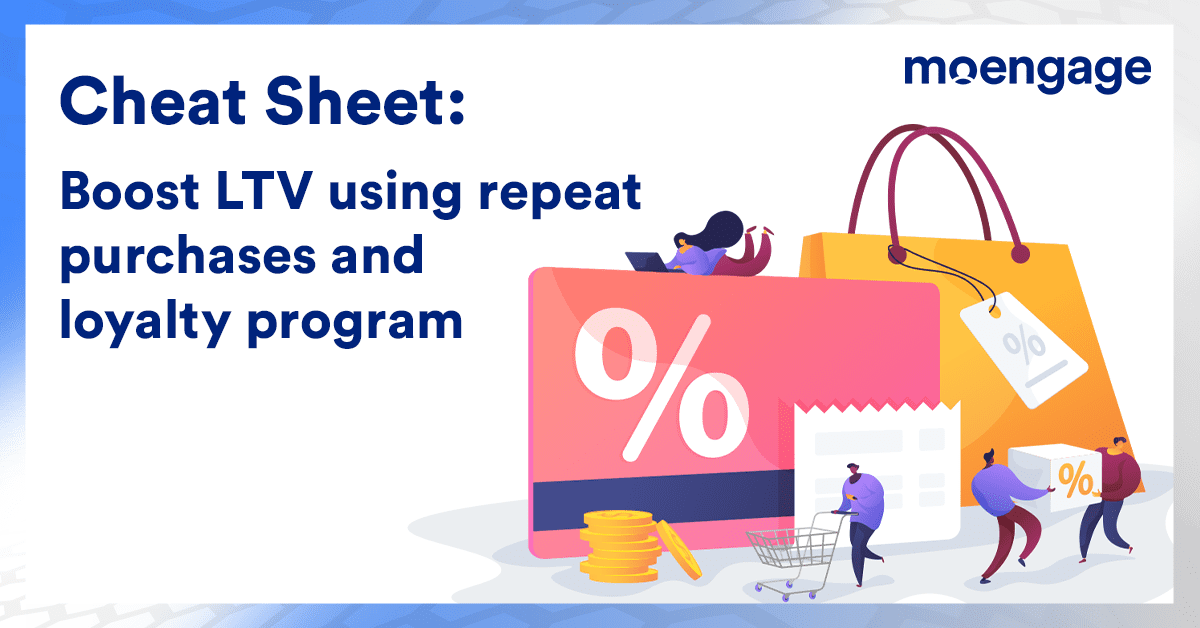
Reading Time: 13 minutes
Did you know that one of the earliest ways to drive repeat purchases was issuing copper tokens back in the late 1700s?
Modern customers love loyalty programs and their rewards too. Here are some stats to prove it:
|
➡️ Over 55% of retail shoppers think loyalty rewards are the most valuable aspect of their retail shopping experience. ➡️ 70% of consumers say they would recommend a brand with a good loyalty program. ➡️ 77% of consumers say that a good loyalty program would make them want to stay with the brand. ➡️ 63% of consumers say that they would change their spending habits to get the most out of a loyalty program. |
Additionally, there is one specific stat that stands out:
Based on HubSpot survey, 69% of consumers have no trust in advertisements. 71% of consumers find sponsored ads on social networks untrustworthy.
These stats are in no way definitive. They show trends that all marketers in the retail, e-commerce, and D2C space must follow.
And the trends are clear: Brands must capitalize on customer loyalty programs. It will attract loyal fans and buyers and increase repeat customers.
By the end of this article, you will:
- know the benefits of having a loyalty program (for your brand and your customers)
- define your loyalty management strategy
- learn how to create a loyalty program to increase customer LTV
- how to measure its success
- define an engagement process to increase loyalty program sign-ups
Benefits of a customer loyalty program in retail
When you look at what a KPMG Survey found, you see how powerful loyalty programs can be. Their research shows that:
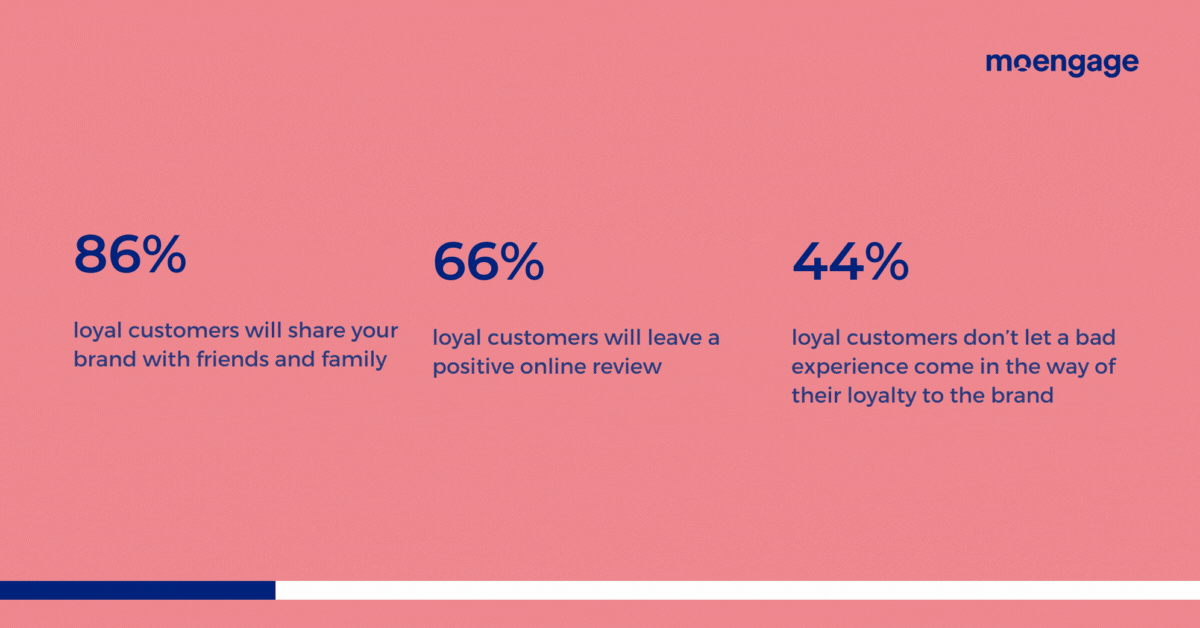
Customer loyalty programs become self-sustaining because they, undoubtedly, build customer loyalty over time.
Also, research by the creator of the Net Promoter Score proves that if customer retention increases by only 5%, profit increases by 25% to 95%.
Is there any competitive benefit to these programs?
According to the same survey, there is!
75% of customers are willing to switch brands over the quality and rewards that other brands’ loyalty programs offer.
Still not convinced?
Here are more reasons to try out a loyalty program:
|
☑️ Brands can stop competing on price. Loyalty cards provide a powerful emotional reason to stay with the brand. So powerful that people will prefer expensive brands whose loyalty programs they love. ☑️ Brands find ways to increase the lifetime value of customers with your brand. ☑️ Predictive data analysis forms the backbone of loyalty programs. It allows brands to find granular segments and build deeper relationships with their customers. ☑️ A well-designed loyalty program results in a highly predictable bottom-line for your brand revenue. ☑️ Brands can make their customers feel special with loyalty rewards. Customers form instant emotional connections with such brands. |
How to calculate the value of a customer?
The term “value of a customer” refers to how much business they bring to the brand. While it may sound cold, it is a good way to understand patterns among the revenue inflow.
After all, no business wants customers with little to no value. All businesses want to get more customers and drive repeat purchases to increase customer lifetime value. This term is abbreviated as CLV, LTV, or CLTV.
Customer lifetime value (LTV) formula
After understanding the CLV meaning, the next step is calculating it.
The actual definition of customer lifetime value is as follows:
“.. a sign of the net profit contributed to the whole future relationship with the customer.”
LTV (lifetime value) calculation allows brands to focus on providing long-term value instead of lowering acquisition costs.
Here is a simple formula to calculate predictive LTV for a single customer:
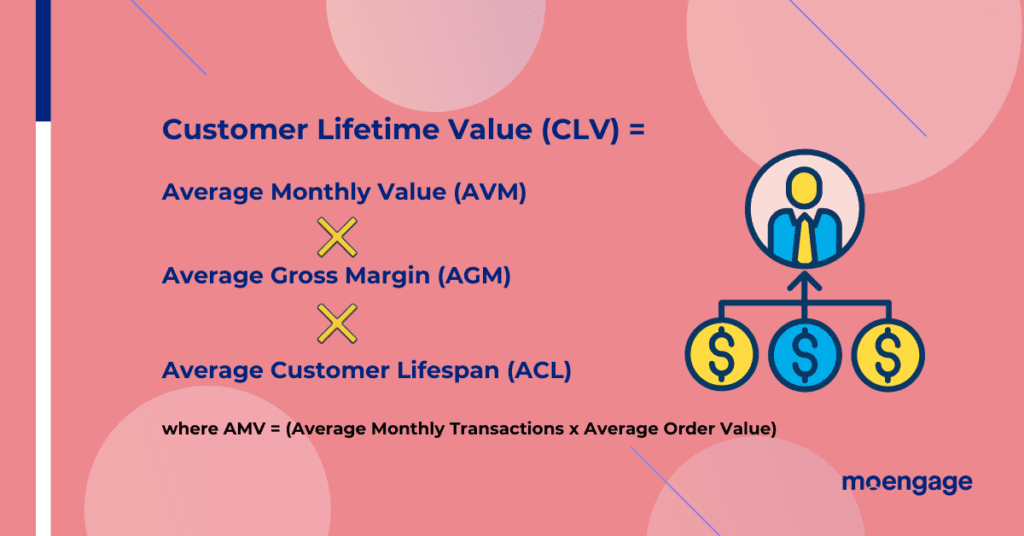
Once this value increases, a brand can retrace its steps back to see what made this value increase. It’s possible to improve CLV again by applying techniques that worked the first time.
Inspire repeat purchases to increase CLTV (Customer Lifetime Value)
Roy Hollister Williams, a marketing consultant and a creator of the Wizard of Ads Trilogy, said:
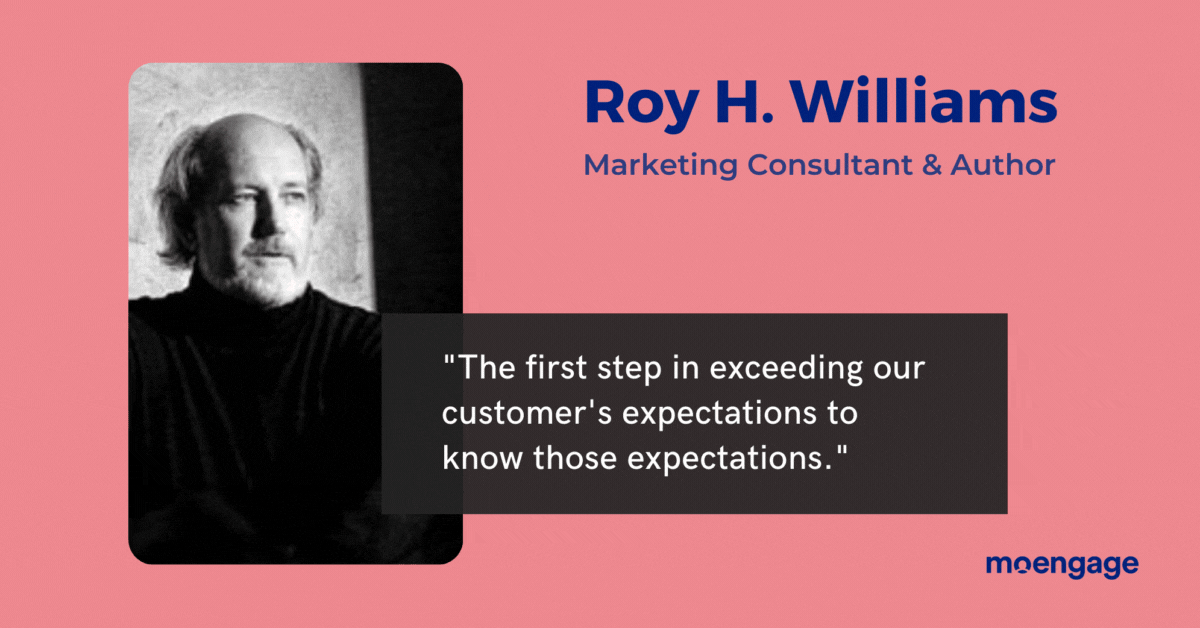
Analysis of what your competitors offer is a good way to start. You won’t find how loyalty programs are working for your competitors. It will tell you what customers in your niche are being offered.
Furthermore, you get to poke holes in your competitor’s strategy and improve your loyalty program.
A
Repeat customer definition
While it seems straightforward, a repeat customer is not always profitable.
We define a “repeat customer” as someone who buys more than once. But as yourself:
Who is more profitable: a customer who buys 2 times or a customer who buys 10 times?
It’s the recurring customer who is more important. These customers see so much value in your products that they keep coming back. They keep an eye on your new releases and keep buying products – over weeks and months.
The goal of creating a customer loyalty program in retail is to turn occasional customers into recurring customers.
B
Define your loyalty management strategy
Modern customers love loyalty cards and points. They expect it from their favorite brands.
Here are the principles of a loyalty program that make customer retention possible:
Customer loyalty programs help generate loyalty through rewards; they do not “reward loyalty”.
Let’s take a hypothetical scenario:
John uses Google Pay several times to order steak or ham sandwiches from a restaurant. Google knows John loves meat. It then gives John a coupon (for another app) to order meat for your home cooking.
When John wants raw meat to cook for a party, he has that coupon.
Here the second app (the meat supply aggregator) didn’t wait for John to start ordering on its app to give him the coupon. It gave rewards through Google Pay to encourage brand loyalty.
You need customers to start using a loyalty program, not to create one.
Here’s one key to getting started on loyal program creation:
You don’t need order data to help create loyalty programs for your brand.
If you have a social media presence, track reactions on your pages and competitor brand pages to extract the data. This data-mining activity takes time and it also creates value for your future customers.
Show them their progress and their “finish line”.
Designer Shoe Warehouse (DSW) built a loyalty program with automatic rewards for frequent shoppers. It was so seamless that many customers forgot that it even existed.
Their response was to remind customers about currently active deals and points needed for a $10 off coupon. They also added a snapshot of their loyalty rewards in the email.
Rewards are like goals for your customers. Help customers see how far they are from these rewards and they will never forget your brand.
Use data to personalize rewards.
Offering rewards isn’t enough. Your competitors also offer rewards (if they have a loyalty membership). Your brand must differentiate itself with personalized rewards to win the hearts of customers.
Loyal customers buy more and they generate more data. Loyalty programs must have tight integration with this customer data.
Predictive analytics helps identify customer types, their preferences/quirks, and their buying patterns. It stops the loyalty program from becoming a soulless portal of rewards.
Make it easy to redeem loyalty points.
A complicated points system will only make your loyalty program less approachable. Don’t make people do math or go through check-points to claim their rewards. You will only create a broken loyalty system.
C
Should you create a paid loyalty program?
Paid rewards programs sound counterintuitive. Why would people pay to get “rewards”? Yet powerful global brands live by such programs.
Amazon Prime is a paid loyalty program. Even lululemon and Restoration Hardware have membership programs.
What makes paid loyalty programs so… rewarding?
There is a lot of “marketing noise” on social media which reduces the entry barrier for new brands. Also, an average smartphone user is more distracted than ever under the grasp of powerful social feed algorithms. Together, this creates a powerful challenge for customer retention managers.
Paid loyalty memberships are a way to hedge that effect by building deeper customer relationships.
When loyalty programs combine with predictive analytics, they create immense personalized value. Customers don’t see what happens in the background. They see the benefits of these expensive systems. Through paid loyalty memberships, customers pay for the value that the brand creates for them.
But where’s the proof that paid loyalty programs drive customer loyalty?
The data from the McKinsey Consumer Paid Loyalty 2020 Survey suggests that:
- Free loyalty programs inspire 30% of subscribers to spend more with the brand.
- Paid loyalty programs double that repeat spend probability to 60%.
The economic climate of the pandemic has made customers reconsider how they enjoy loyalty programs. We see this shift in these stats below:
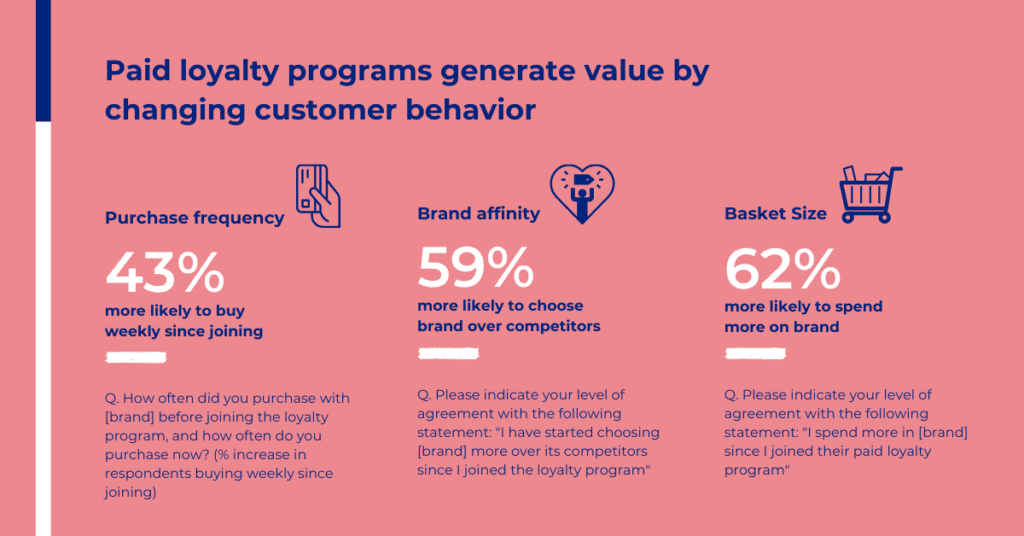
D
How to combine free and paid loyalty programs?
This simple strategy helps create a symbiotic relationship between the brand and the customer.
A brand starts with a free, points-based loyalty program without any targeted data for personalization. As occasional buyers gather points, they realize the benefits of shopping more with the brand. Over time, this builds into a relationship.
The brand gathers data through upselling and cross-selling experiments on these frequent buyers. They help the brand extract accurate insights about the customers’ preferences.
The second stage is the paid program. Here:
- Members have already built a relationship through gaining and redeeming loyalty points. They are ready for more; and
- The brand already knows the customers well enough to provide personalized value.
Such a tiered model provides a “best of both worlds” option to the brand.
E
Create exceptional programs with these loyalty program trends
A great way to differentiate your loyalty program is to partner with brands in a co-existing niche. The Shell and Dunkin’ Donuts partnership and the Hilton Honors and Lyft partnership are examples to follow. Such partnerships make your loyalty program irresistible.
Another important trend is adding a social cause aspect to your loyalty program. There is data to prove that 74% of millennials want their favorite brands to stand publicly for a social cause. There is risk associated with this strategy and yet we see several brands using it.
- United Airlines Mileage Plus members can donate their points to the American Red Cross.
- Target Circle members cast votes to decide which local nonprofits get Target’s charitable donations.
Loyalty KPIs to achieve (achievable targets)
To keep pushing improvements to your loyalty program, you need to do a health check.
Here are the most important metrics to track the success of your loyalty program:
1
Customer retention rate (CRR)
This is a measurement of how many of your customers in a given period have made repeat purchases.
The formula is as follows:
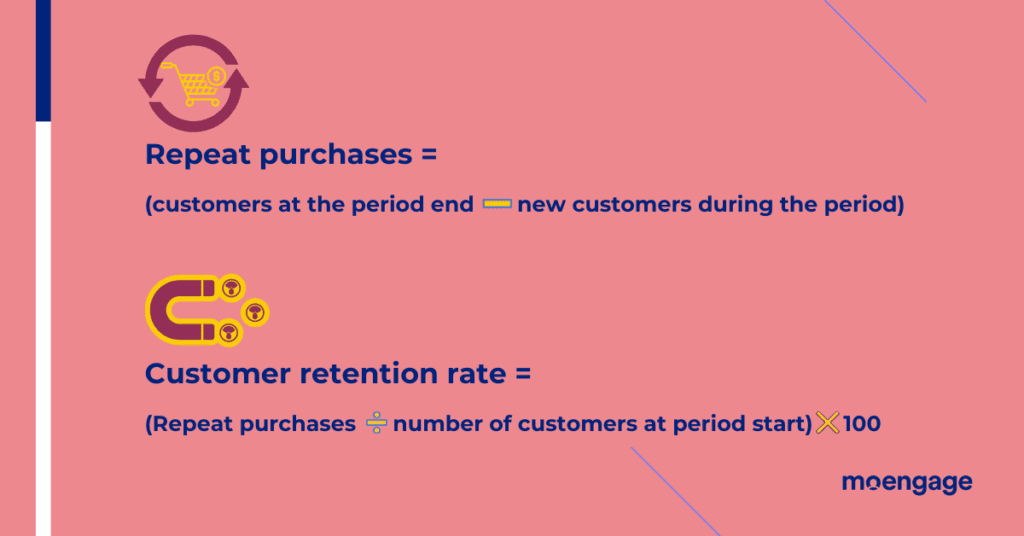
Track your CRR over longer periods (monthly, quarterly, or more) because it doesn’t show quick changes.
2
Redemption Rate (RR)
This metric helps determine the usefulness of your loyalty program to your customers. The higher the PRR, the more effective your loyalty rewards are.
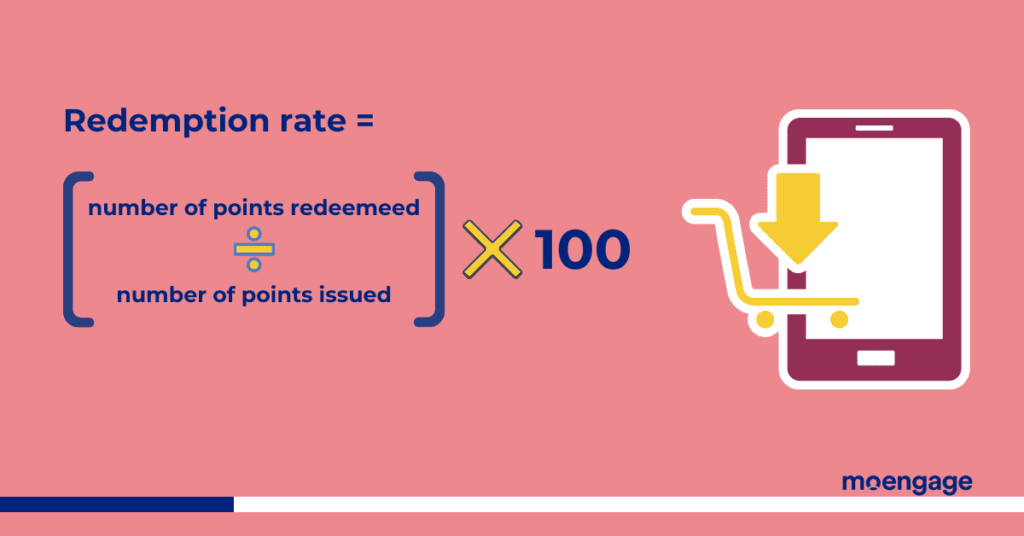
PRR of below 20% is a common occurrence.
3
Participation Rate (PR)
This metric measures how many of your enrolled customers find value in your loyalty programs. These are customers who love to redeem their points at regular intervals.
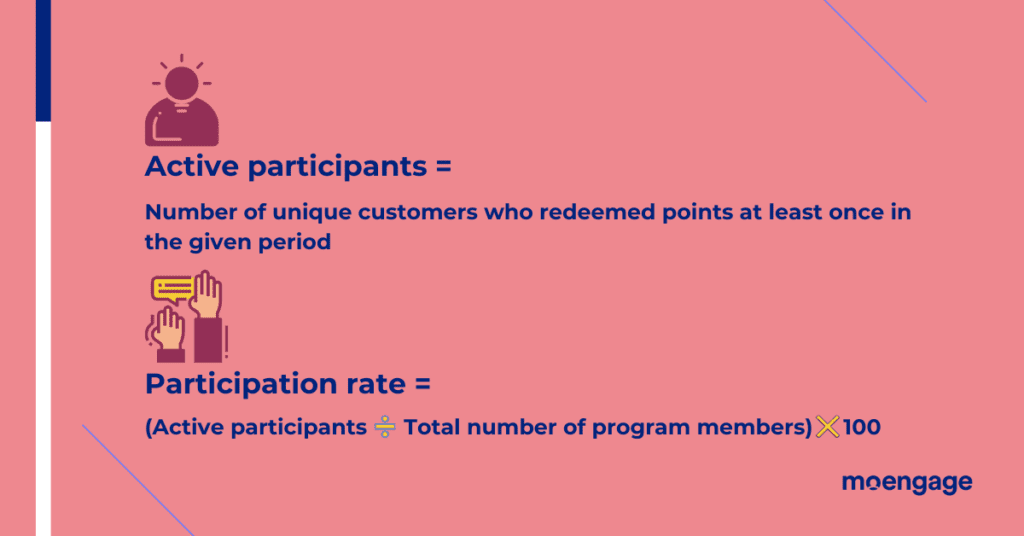
A PR in the range of 5% – 7% means the program isn’t providing worthless rewards.
4
Repeat Purchase Rate (RPR)
Measure this metric over 365 days. It’s the most direct measurement of how well your loyalty program is performing.
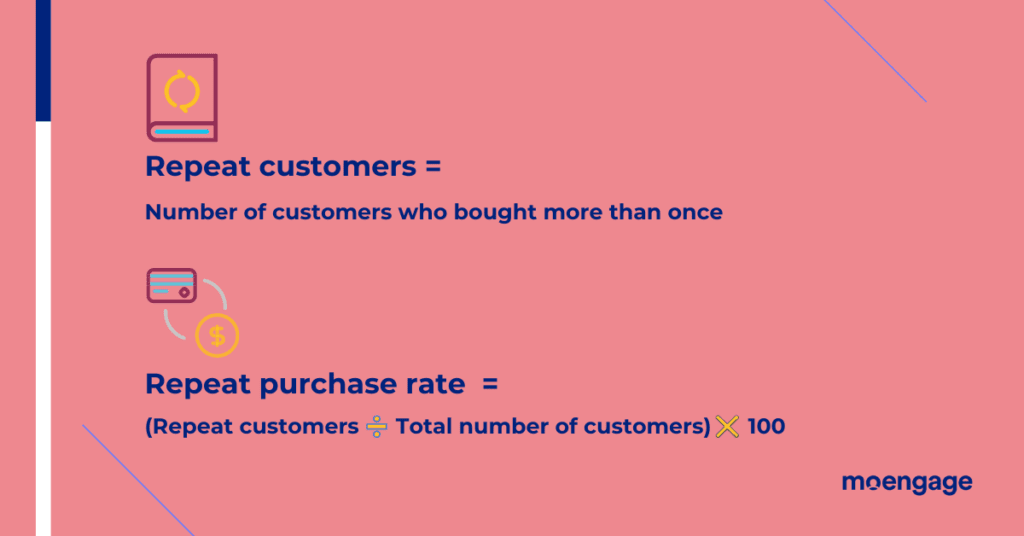
A loyalty program is successful if it achieves an RPR of 20-40% over a full year.
5
Loyal Customer Rate (LCR)
Like RPR, we measure LCR over 1 full year. Unlike the RPR, we choose customers as “loyal customers” who have bought from us more than 4 times.
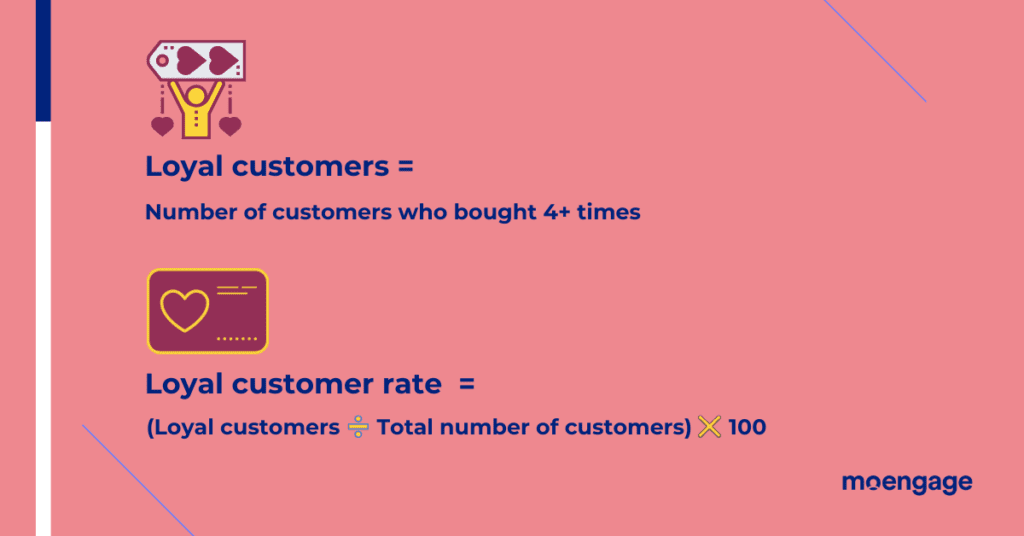
Don’t forget to gather voice-of-customer (VoC) data through questionnaires from your loyal customers. It helps improve LCR and other stats of your loyalty program.
6
Inactive Participants Rate (IPR)
This is the reverse of Participation Rate (PR). The goal is to lower this metric over a given period.
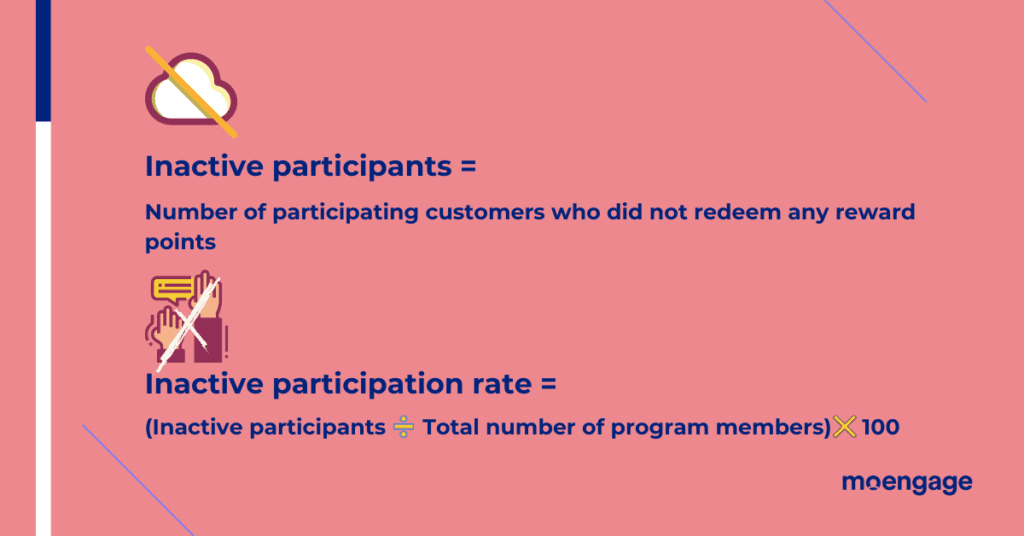
A step-by-step method to start offering a loyalty program
It all starts with planning the order value milestones and rewards against them. But end-to-end planning of a loyalty program takes a lot more work.
Step 1: Conceptual stage
Keep the original concept in mind and derive a business case out of it. Don’t create a loyalty program to make your brand “look cool” or to copy the competition.
- Use your KPIs to define your goals long-term objectives.
- Define process requirements (Revamp an existing plan or design a new one from scratch). This will tell you how much work you need to do and how to plan it out over time.
- How will you make this program a natural part of your brand identity?
- Explore internal data about customer expectations and buying patterns
- Will it be a free or paid or tiered loyalty program? And why?
- What do you need to start offering this program across all active channels i.e. mobile app, website, e-commerce store, etc?
Step 2: Designing and implementation
You have three options here:
- Do everything in-house: It costs a lot of money and takes a long time. You will also need targeted expertise across UX, Customer Research, Development, and so on. It is a great learning experience for your organization. Your business team will need a long-term appetite for this program. They must be ready to commit at least 1 year
- Hire an external agency: Outsource the work to creative agencies and take advantage of their industry expertise for a smooth rollout.
- Use a loyalty program software: Create customized loyalty programs at a quick pace and at a cost-effective price with software.
Step 3: Launch and promotion
Loyalty programs are no different from product releases. You have to first announce the release. After that, you have to keep it on top of the minds of your loyal customers.
Here are the main parts of the process.
Prepare before the enrollment starts
Certain brands roll out the program during a single-day launch. This is not enough.
For a successful launch, your customers must be excited before the launch. Social media is a great tool to start building the buzz for your loyalty program.
Hitting them cold turkey without warming them up will only generate a small buzz around the launch date.
Create a sustained buzz by bringing in influencers to try out the program in a “beta launch” phase.
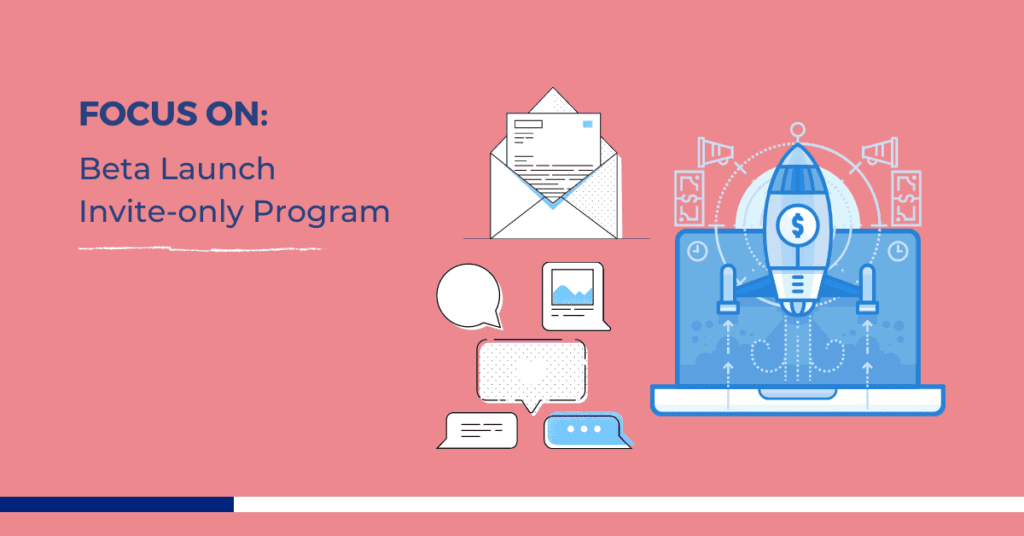
Define your target customer set
Like all marketing activities, a loyalty program rollout must also align with your customer personas. Since the goal of this program is to generate loyalty, define the criteria of customers whom you would invite to this program.
You could try an invite-only program to create a buzz or you could open it to everyone in your audience. Based on your goals, this strategy may fall somewhere between these two approaches.
Communicate with your team before your audience
When Decathlon ran a similar program, internal training was a cornerstone of success. They trained their employees on the new app, how the loyalty program works, and acquainted them with product features.
Every customer-facing executive must know different scenarios and their role in such scenarios. They should have the necessary information about the program so they can answer any questions customers ask them.
Internal training is more than a single-day training. Successful operation of this new program to customers requires regular monitoring as well.
Define how you will market your launch
An omnichannel launch strategy works best in most cases.
Most customers will realize that it’s a campaign if they follow your brand on multiple channels. We don’t want any customer to feel that they are just a number in this launch.
Give them a reason to join the program. Let them know their specific benefits. If they see how they will benefit from joining, they’ll happily participate even if they understand it as a marketing campaign.
Hence, blending personalization into this strategy increases the chances of a high number of launch-week enrollments.
Step 3: Create an engagement strategy to drive sign-ups
Loyalty program is all about going beyond transactions and looking at the big picture—amplifying the customer lifecycle. And how do you amplify it? By rewarding your customer’s actions with desired rewards. All this will come together if and only if you have a strong, logical engagement strategy in place. You need to have a complete user engagement journey orchestrated using dynamic lifecycle campaigns.
Personalized, distinct engagement approach
Your loyalty program needs to be smart and NOT generic. The best way to go about it is to understand your users’ shopping habits and preferences and send personalized rewards based on those criteria. Once this is out of your way, make your program more distinct. This means you need to focus on driving your users to earn and redeem rewards.
Define user actions and events
Now that you know what your approach is going to be, focus on analyzing and understanding user shopping habits. To do this, you need to focus on learning all user actions and their corresponding events. You can use a customer engagement platform like MoEngage to analyze user paths, behavior and add them to custom cohorts based on your requirement. Using all this data, you can also create a reward catalog based on various user events created in the system.
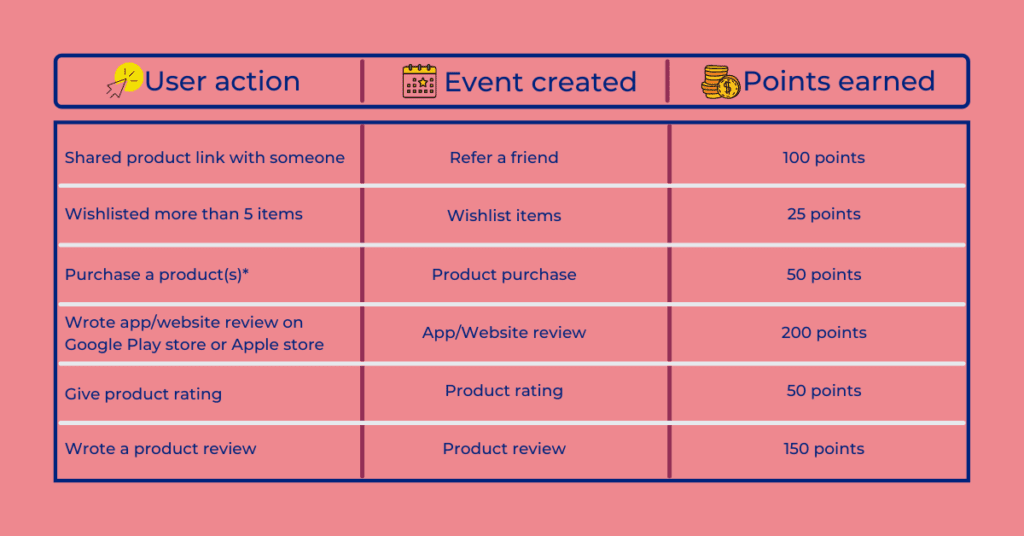
Engagement workflow using custom triggers
You understand user actions with their corresponding events, so what’s next? If you use a customer engagement platform like MoEngage then you can use this event data to create custom workflows. These workflows will help you create an event-level customized framework using complex conditions and triggers. Basically, you can trigger customized rewards engagement to trigger messages to your users based on their actions. The messages will be personalized based on rewards to be redeemed and will also focus on user-preferred products/category.
Social community driven approach
Apart from sending personalized push notifications, SMS and emails, you can also send messages on social channels. For instance, Facebook and Whatsapp can be utilized to engage users for loyalty programs. Apart from rewarding users for sharing product/category links on such channels, you can reward them for like, share and comment. You can trigger messages directly on these channels encouraging them to do more.
Remember that your users are happy to connect and engage with you only till the time it is relevant and logical. So use your engagement channels wisely and ensure your communication is always relevant. You can use on-site surveys or feedback emails to better understand your users’ pulse. Probably utilize these feedback approaches to know and discern customer preference on your current loyalty program. Remember loyalty programs are a great way to build your customer lifecycle, and if executed rationally, will reap more ROI.
What’s Next
- Learn how the top bridal brand in the U.S. Cocomelody was able to improve its repeat purchases using personalized engagement.
- Read this article to learn three tactics that will help you improve your customer LTV.
- Understand how MoEngage can help retail/e-commerce brands in executing a more dynamic and insight-led engagement.













